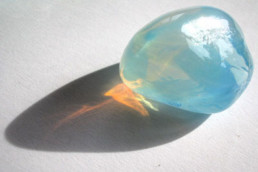Why are Veins Blue?
Have you ever wondered why your veins appear blue even though your blood is red? A recent study has revealed a possible explanation for why veins and some nevi, or moles, look blue to the human eye. Before this, research suggested that it was because of the Tyndall Effect. This phenomenon is when blue light is scattered more than other colors like red as they pass through particular gasses and fluids. This results in more visible blue content. This hypothesis, however, was not confirmed and was based on conjecture of what the Tyndall Effect would do to human tissue.
With questions still remaining, like why the blue scattering only happens in veins and moles and not other areas of the skin, researchers set out to learn more. The authors of the study, entitled “The Role of Subtractive Color Mixing in the Perception of Blue Nevi and Veins—Beyond the Tyndall Effect,” used a CM-2600d Spectrophotometer from Konica Minolta Sensing Americas to assess the reflectance in skin compared to a vein in the same person. Additionally, they measured the color in normal and blue-tinted moles on test subjects.
The results suggested a different effect, called “subtractive color mixing,” which is similar to removing the yellow from green. Essentially, instead of more blue reflectance, it means less red reflectance. Though the difference between the two might sound minuscule, this opens the door to the possibility of various physical explanations for fewer amounts of red wavelengths besides the Tyndall Effect. Other causes include hemoglobin levels, differences in the vascular system, and amounts of melanin.
The lack of red causes the eye to perceive certain body parts as blue. This is due to a sort of chromatic induction named “simultaneous contrast,” which leads to a heightened sense of contrast between two colors.
For any dermatologists looking to study or analyze skin color, the CM-2600d Spectrophotometer for Konica Minolta Sensing Americas is a great resource for measurements. This handheld, portable device can evaluate color, UV characteristics, and relative gloss in samples of all sizes, making it ideal for research purposes.










